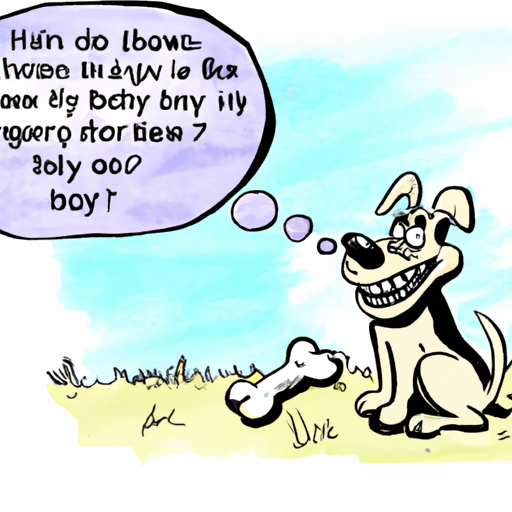Understanding Canine Behavior
Understanding why dogs hide bones starts with a deep dive into their primal instincts. When you give a bone to your dog, you might observe a strange behavior. They might run off and bury it in the backyard, or hide it under a pile of laundry. This behavior can seem odd to us humans, but for dogs, it’s as natural as breathing.
It’s important not to anthropomorphize dog behaviors too much, but to understand them from a canine perspective. Dogs don’t hide bones because they’re planning a midnight snack or because they’re playing a fun game of hide-and-seek. Instead, it’s a primal instinct that comes from their wild ancestors, who needed to hide food to survive.
The Survival Instinct
Back in the days when dogs were wild, they had to hunt for their food. Hunting takes a lot of energy and the food they find isn’t always enough to sustain them. Therefore, when they had a surplus of food, they would bury it to hide it from other animals and to save it for times when food was scarce.
Here’s a brief table showing how this behavior has translated into modern dogs:
| Primal Behavior | Modern Dog Behavior |
|---|---|
| Hunt for food | Excited for meal times or when given treats |
| Hide surplus food | Bury or hide bones and treats |
| Protect hidden food | Show aggression or anxiety when their hiding spot is approached |
This instinct to hide food is still present in our domesticated dogs, even though they now have consistent access to food.
The Role of Scent
Another reason why dogs hide bones is due to the strong scent that bones carry. In the wild, the scent of food can attract other predators. By burying their bones, dogs can mask the scent and keep their food safe.
Even in a home environment, dogs may hide bones to prevent other pets or humans from finding them. The scent of the bone also gets more potent over time, which might be more appealing to your dog.
An Outlet for Natural Behaviors
Beside the survival instinct, dogs also hide bones as an outlet for their natural behaviors. Digging and burying are stimulating activities for dogs and can help alleviate boredom or stress.
So, providing your dog with bones or toys can be beneficial. Here’s why:
- It keeps them entertained
- It allows them to exhibit natural behaviors
- It can help reduce unwanted behaviors (like digging up your garden)
What You Can Do
As a caregiver, there are a few things you can do to manage this behavior:
- Provide safe bones or toys for your dog to hide
- Designate a specific area where your dog can dig
- Monitor your dog to ensure they’re not hiding bones in unsafe places
Remember, while it’s important to allow your dog to exhibit natural behaviors, safety should always be your top priority.
Frequently Asked Questions
Why does my dog hide bones in the couch?
This is a safe and convenient hiding place for your dog. It’s inside your home and unlikely to be disturbed.
Should I let my dog hide bones?
Yes, as long as it’s safe. It’s a natural behavior and can be beneficial for your dog.
Why is my dog suddenly hiding bones?
This could be due to changes in their environment or diet. If you’re concerned, it’s best to consult with a vet.
What should I do if my dog is hiding bones in unsafe places?
Try providing designated areas or containers for your dog to hide their bones. If the behavior continues, consider consulting with a professional dog trainer.



